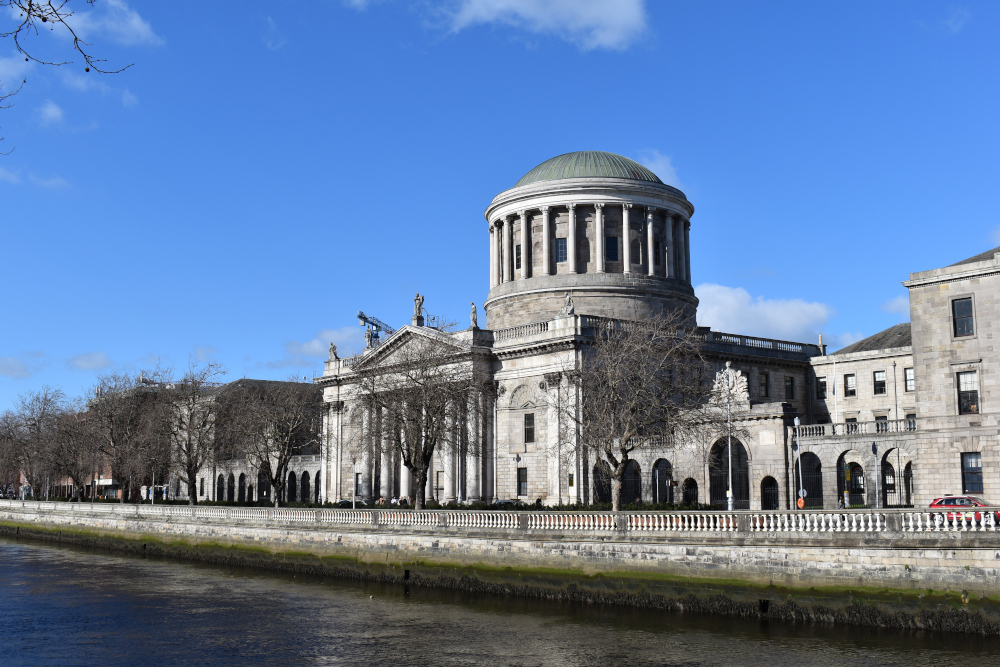High Court: Leave to appeal quashing of planning permission for 399 apartments in Heuston South Quarter refused

The High Court has refused leave to appeal an order of certiorari quashing planning permission for a strategic housing development in Heuston South Quarter.

About this case:
- Citation:[2025] IEHC 157
- Judgment:
- Court:High Court
- Judge:Ms Justice Emily Farrell
Delivering judgment for the High Court, Ms Justice Emily Farrell found that none of the points raised by the notice party in relation to pleading requirements, the manner of interpretation of An Bord Pleanála’s decisions and its inspectors’ reports and the question of whether a material contravention of a development plan provision is one of degree, constituted points of law of exceptional public importance.
Background
The notice party, HPREF SHQ Investments Ltd, was granted planning permission for a strategic housing development (SHD) involving the construction of 399 apartments in the Heuston South Quarter by An Bord Pleanála (the Board) on 31 March 2022.
The site for development shared a boundary with the gardens of the Royal Hospital Kilmainham, a protected structure. Further, the proposed development would impinge upon a protected view contrary to Guiding Principle 8 under Strategic Development Regeneration Area (SDRA) 7 of the Dublin City Development Plan 2016 – 2022.
In those circumstances, the High Court quashed the grant of permission, finding inter alia that the Board’s decision must be interpreted as having found that the proposed development would adversely affect the cone of vision and the protected view, although that adverse impact was not found to be significant or substantial.
The notice party applied for a certificate for leave to appeal to the Court of Appeal under s.50A(7) of the Planning and Development Act, 2000, arguing that in light the size of the development and the extant housing crisis, it would be in the public interest to permit an appeal to the Court of Appeal.
Questions for certification
In this regard, the notice party proposed questions for certification concerning inter alia:
i) Whether a court could determine a challenge to a Board decision on the basis of an interpretation of that decision which was not pleaded by the applicant;
ii) The approach to be taken by a court in interpreting a decision of the Board or a report of an inspector thereof, where the report or decision concludes that a proposed development would adversely affect a protected objective in a development plan;
iii) When considering whether a proposed development complies with a provision of a development plan, whether the Board and/or its inspector are required to make their determination using the exact wording of that particular provision;
iv) Where a development plan prohibits new developments adversely affecting a protected view, whether the question of whether there is a material contravention of that provision one of degree;
v) Where a development plan provides that new developments shall not adversely affect a view that is protected and where that provision was expressly considered, whether the Board’s conclusion that the impact of the development on that view did not warrant refusal should be interpreted as a finding that the Board did not consider there to be a material contravention of that provision.
The High Court
Ms Justice Farrell set out the relevant legal principles in respect of the application, noting that it was agreed that to be certified, a point of law must arise from the judgment of the High Court and that the requirements that it be a point “of exceptional public importance” and be “desirable in the public interest that an appeal should be taken” to the Court of Appeal are cumulative.
Turning to the first point raised by the notice party in relation to pleading requirements, the court did not consider that the question of whether an applicant must set out the interpretations of the Board’s decision which are open to the High Court amounted to a point of law of exceptional public importance.
In particular, Ms Justice Farrell highlighted the judgment in Cork Harbour Alliance for a Safe Environment v. An Bord Pleanála [2022] IEHC 231 wherein the court stated that it could not see how the importance of pleading in judicial review could be elevated to a point of law of exceptional public importance in circumstances where the principles themselves were not in dispute.
The judge also had regard to Halpin v. An Bord Pleanála [2020] IEHC 218 which considered that “it will not normally be enough for a putative appellant to complain that the High Court did not properly apply established legal principles to the particular facts of the case; rather it seems that the basis of any appeal must be that the very legal principles relied upon by the High Court judge were incorrect.”
Ms Justice Farrell confirmed, “The principal judgment did not purport to alter or refine the principles applicable to the contents of a Statement of Grounds, which principles have been considered frequently by the Superior Courts…As the correctness of the principles identified in the principal judgment is not in issue, the application of those principles (even assuming that they were applied erroneously) is not likely to be of precedential value.”
Turning to points 2, 3 and 5 concerning how the court should interpret the Board’s decision including its inspector’s report, Ms Justice Farrell reasoned: “If I have erred in the interpretation of the words used by the Board, that is an error of fact, specific to the case.”
The judge continued: “It is trite law that planning documents are to be construed in their ordinary meaning, as understood by members of the public without a particular expertise in planning or law”, pointing out that the court’s method of interpretation was the consideration of the ordinary meaning of the words used and findings made in the inspector’s Report and Board direction and that it had not been submitted that the principal judgment developed or departed from the principles on interpretation of planning decisions set out in the jurisprudence.
As to point 4 on whether the question of material contravention of a provision of a development plan is one of degree, the court disagreed that the proposed question could transcend the facts of the case to apply to all cases where a development plan prohibits an adverse effect on a protected objective.
Ms Justice Farrell highlighted that “The prohibition of adverse impacts on the cone of vision in the Development Plan is expressed in absolute terms – “Any new developments within this ‘cone’ shall not adversely affect this view”, noting that the notice party had not pointed to any language in the development plan supporting its contention that the application thereof allows flexibility, discretion and/or planning judgment to the decisionmaker.
The judge explained that planning judgment is to be exercised in deciding whether an impact is adverse – a qualitative decision rather than a question of degree, finding that “The question which the Notice Party seeks to have certified confuses or conflates the nature and degree of an impact on the cone of vision. Regardless of the degree of an impact on the cone of vision, it is not prohibited if it is not adverse. A de minimis effect on the cone of vision would not be adverse. It is only where there is an adverse impact on the cone of vision, that the prohibition applies.”
Having regard to the notice party’s submission that the findings in the principal judgment gave rise to a question as to how the question of whether there is a material contravention of a provision is to be determined, where the development plan called for the exercise of planning judgment in respect of whether there is an adverse impact on a protected objective, the court determined that “This does not arise – in this case, I found that the Board had found that there was an adverse impact on the cone of vision…For the reasons set out in the principal judgment, I do not consider that the Plan left open flexibility to decide whether or not an adverse impact should be permitted.”
Conclusion
Accordingly, the High Court refused the application.
Leech & Anor v An Bord Pleanála & Ors [2025] IEHC 157








